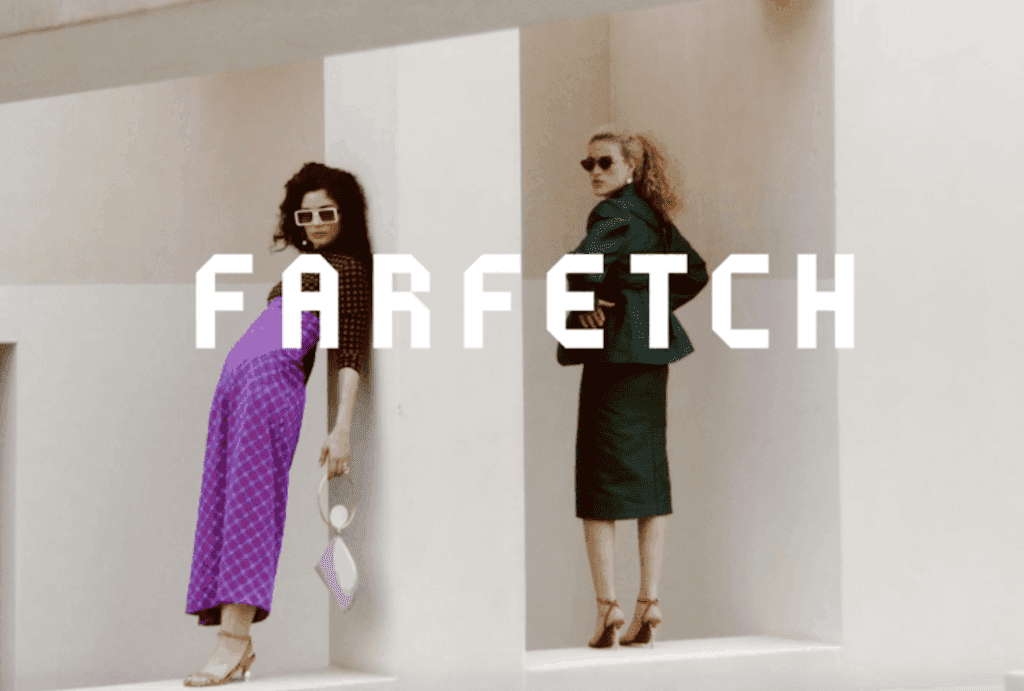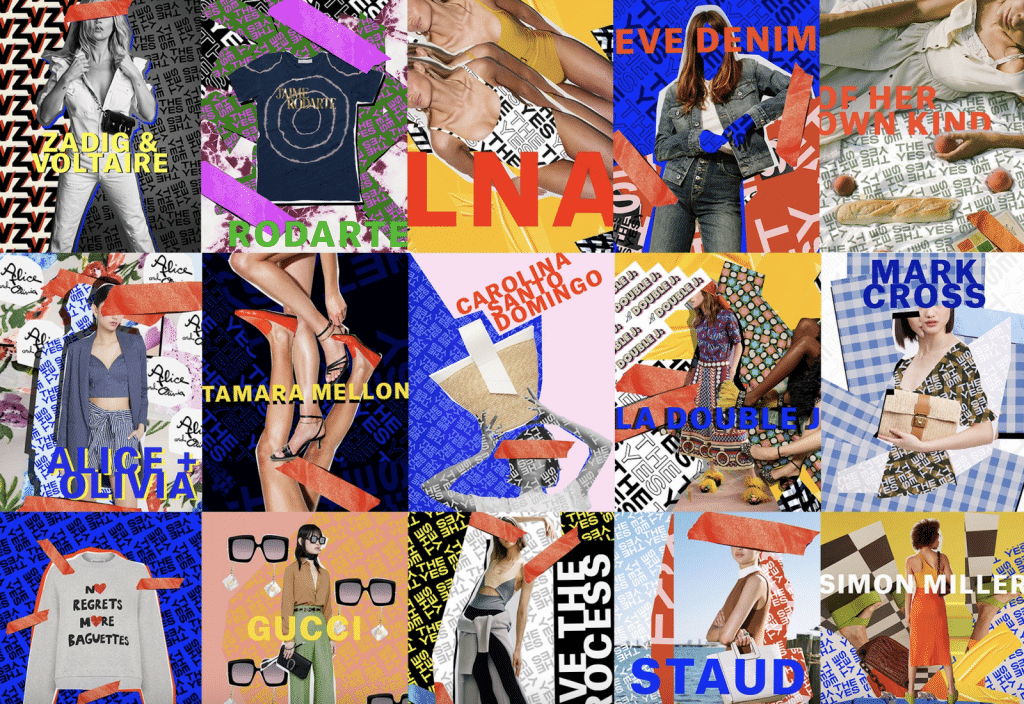The stunning crumbling of the company that aimed to dominate how luxury is sold online ended abruptly this week. Farfetch revealed on Monday that it has reached a $500 million rescue deal that will see its assets bought up by Korean e-commerce giant Coupang, Inc. The impending acquisition stems from a last-ditch effort by management for debt-ridden Farfetch to find a “white knight” in order to avoid bankruptcy. One need not look further than Farfetch’s stock price to see just how bad things had gotten: Its New York Stock Exchange-listed shares dropped from their February 2021 pandemic high of $73 to $1.60 on October 20, 2023. The price then hit a new low of just $0.64 on December 15 before trading was halted on Monday.
While the latest leg of the London-based e-commerce marketplace’s fall from grace – which followed closely from its announcement that it would not release Q3 results as planned on November 28 and subsequent downgrades by credit rating agencies like Moody’s – was relatively swift, its financial woes have been years in the making. And in fact, at least some analysts say that the signs of an inevitable downfall for Farfetch, which was founded in 2007 by Portuguese entrepreneur José Neves, had been apparent for a while.
Burning Cash, Going off Path
For instance, Farfetch significantly ramped up its spending – making profitability ever-more-elusive – in the wake of its IPO. According to Bloomberg, Farfetch “burned through at least $1 billion in cash since [its] listing.” This raised red flags among investors, including Condé Nast, which is said to have been so “concerned the amount of money Farfetch was spending on marketing” that it dumped its £234 million stake in the company in July 2019.
Not just an issue of rising costs, investors have been put off by Farfetch’s increasingly complicated trajectory away from its core business of providing a marketplace platform for brands to sell their wares – potentially prompted by the fact that this proved to be a particularly difficult model to carry out even with borrowings of $1.6 billion by Bloomberg’s calculations. Or as Chalhoub Group’s Director of Corporate Innovation Nick Vinckier put it in October, Farfetch’s troubles can be chalked up to “its marketplace relying heavily on discounts to attract customers, its platform solutions business lacking momentum, and its owned brands like Off-White and Palm Angels losing market share.”
But even if the signs were there, a few things seemed to either mask what the Financial Times has called “cracks in [the Farfetch] business model” or to at least lengthen its runway. Maybe most significantly: COVID-19. With stay-at-home mandates in place and corresponding store closures, the pandemic was a boon for many companies’ e-commerce sales, and Farfetch was no exception. For the three months ending on December 31, 2021, for instance, the company reported sales growth of 32.9 percent to €158.6 million, and hit profitability for the first time, making good on its “promise that the uplift from COVID will help it deliver its first annual profit (on an adjusted basis)” in 2021, as the FT put it. Farfetch subsequently revealed that its gross merchandise value for 2022 “nearly doubled” from the onset of the pandemic to $4.1 billion.
Were it not for the positive effects of the pandemic, Farfetch would likely “have run out of cash and/or otherwise struggled to remain a viable business entity much earlier, in 2019 or 2020,” GAM’s Investment Manager for luxury equities Flavio Cereda tells TFL.
Some have argued that the addition of new revenue streams from acquired companies, including Off-White license holder New Guards Group, reseller Stadium Goods, and beauty brand Violet Grey, among others, also helped to “keep [Farfetch’s] gross merchandise value” – a key metric from retailers – on the up and up, and would ultimately “pay off as the luxury industry [continues to] make a belated shift online.”
And still yet, there is also the fact that leading up to – and in the wake of – its initial public offering, Farfetch had a fair share of the media on its side. Some seemed skeptical about Farfetch ahead of its stock market debut, which saw the company raise $885 million, valuing the business at a cool $6.2 billion. Seeking Alpha analyst Gary Alexander, for one, asserted in September 2018 that “there’s no doubt Farfetch is a powerful brand,” but questioned the extent of its competitive advantages – and its almost $6 billion valuation.
“Does it have a true and deep moat?,” Alexander pondered. “Yes, an e-commerce outlet for high-fashion brands is an exciting niche now, but to some extent, Alibaba’s Tmall has pioneered a similar third-party marketplace in China that is far more extensive in its reach, [and] there is nothing from preventing … Amazon, Alibaba, and JD.com from eventually crowding Farfetch out of its niche.” Others argued that the company’s IPO pricing was “edg[ing] towards an overvaluation.”
Meanwhile, Bloomberg’s Andrea Feldsted asked – in an article, entitled, “Farfetch’s Farfetched Valuation” – whether the giant could “really crack online luxury retail without becoming a big spender itself.” With its growing costs in mind, Feldsted stated that Farfetch’s prospective valuation, which relies heavily on its “capital-light” model of not holding inventory but instead connecting consumers to third-party stockists and taking a cut of the sale, “might prove to be quite farfetched.”
Drowning Out any Doubts
Yet, any doubts about the viability of the Farfetch business were all but drowned out by the strong industry media that the fashion-tech company had behind it, as well as the enthusiasm of a number of respected industry analysts, which seemed to help craft and carry the narrative that Farfetch was the most optimally-positioned luxury retailer in the market and thus, the future of fashion/luxury on the web.
Influential industry publication Business of Fashion, for example, has been a cheerleader for Farfetch, publishing an early interview with Neves, in which he detailed his vision for the company way back in 2009, two years after its founding. Ahead of the IPO, BoF’s coverage of Farfetch was largely favorable, with the publication asking back in 2018, “How will Farfetch make the mother of all fashion-tech exits?” and “Is Farfetch Edging Towards a $5 Billion IPO?”
At the same time, it was critical of some of Farfetch’s closest rivals, including Yoox-Net-a-Porter (“YNAP”). A three-part dive into the merger of Yoox and Net-a-Porter (“YNAP”), for example, closed with a striking comment from Carmen Busquets (who maintains active stakes in BoF and early Farfetch stakeholder Felix Capital, and was invested in Farfetch, herself, from 2015 to 2018), saying that instead of joining with Yoox, “a more powerful merger” for Net-a-Porter “would have been with Farfetch, [which] has [more] modern technology and intelligent solutions.”
(BoF’s coverage of Farfetch raised eyebrows, including at the Sunday Times, which published a piece in June 2020, in which it cited one unnamed Wall Street bank analyst who accused Farfetch of using BoF “as a marketing tool … in a pretty scandalous manner” leading up to the IPO. BoF “seemed to help drive [Farfetch’s] valuation up because they started to report how wonderful this marketplace was and how poor YNAP was. Then they reported [Farfetch’s] valuation going up – [to] $3 billion, $4 billion, $5 billion.”)
Other media outlets followed suit and dedicated space to Farfetch in the run up to its IPO and thereafter. One of Forbes’ columnists, for instance, suggested that Neves might well be the “Jeff Bezos of fashion” – although, the author also noted that Farfetch’s initial trading day valuation of $6.2 billion “is mind boggling for a company that has yet to turn a profit and lost $112 million last year on $386 million in sales.” Around the same time, a 2018 McKinsey report cited Richard Liu, the founder and then-CEO of Farfetch investor JD.com, who said that Farfetch was “obviously the most successful and largest platform today for boutiques.”
Articles highlighted Farfetch as “representing the future” of e-commerce thanks to its “game-changing” model and touted Farfetch as having the potential to “grow more like a tech firm than a luxury retailer.” All the while, analysts were busy adding to the momentum of Farfetch. In a 2017 article, entitled, “The Trouble with Yoox Net-a-Porter,” which was published by BoF, Luca Solca, then head of luxury goods research at BNP Exane Paribas, pitted Farfetch and multi-brand e-commerce incumbent YNAP against one another, placing his bets on Farfetch coming out on top thanks to its “[n]ew model … that potentially better fit with the strategies of luxury brands.”
Solca was among those that appeared to change their tune in the wake of the IPO, asserting a year later that Farfetch was “burn[ing] cash too fast.” He also shut down attempts to liken Farfetch to ride-share titan Uber, saying that the company “is no Uber of luxury goods distribution: most of the luxury goods brands worth their salt already have limousines of their own. The viability of a business model focused on providing the most aggressive prices is questionable.”
The Future for Farfetch
And if Farfetch’s market capitalization and a proposed securities class action lawsuit are any indication, shareholders have similarly taken a different stance on the company. In a complaint that he lodged with a federal court in Maryland in October, Farfetch investor Michael Ragan accuses Farfetch, Neves, former Farfetch chief financial officer Elliot Jordan, and Group President Stephanie Phair of making “materially false and misleading statements regarding [Farfetch’s] business, operations, and prospects” between March 9, 2023 and August 17, 2023.
In his lawsuit, Ragan asserts that the defendants misled Farfetch shareholders – like himself and “hundreds, if not thousands” of other holders of Farfetch’s Class A ordinary shares – by making false statements and/or failing to disclose material facts regarding the state of the U.S. and Chinese markets, its gross merchandise value growth, among other things.
In other legal circles, there reportedly have been questions about the veracity of some of Farfetch’s numbers, raising the possibility that other class action complaints might be in the works, as well.
As for what will become of Farfetch – which is said to be suffering now, in particular, as brand partners race for the exit door – that is currently unclear. There is no telling – yet – what Coupang has in store for the retailer. What Coupang has offered up so far is a somewhat vague statement in a release, in which it asserted that that it will combine its “operational excellence and innovative logistics” with Farfetch’s “leading role in the luxury ecosystem” to deliver “exceptional experiences for customers, boutiques, and brands across the world.”














